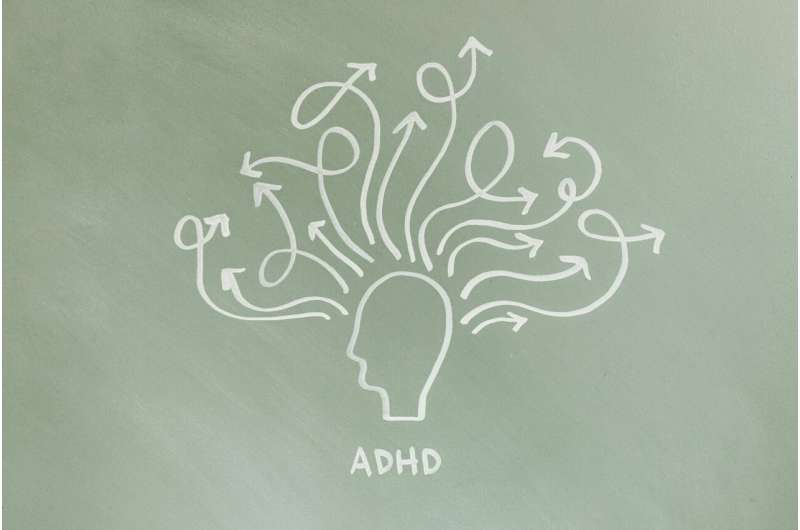Understanding the Causes of ADHD: Insights into What We Know and Suspect

Explore the current understanding of ADHD's causes, including genetic, environmental, and developmental factors, with insights into diagnosis challenges and gender differences.
Attention-Deficit Hyperactivity Disorder (ADHD) is part of a broader group of neurodevelopmental disorders that affect brain development from early childhood. These conditions include autism spectrum disorder, learning disabilities such as dyslexia, and ADHD itself. Symptoms of these disorders usually become more apparent over time, especially as the delays in reaching developmental milestones become noticeable in a child's behavior and skills.
ADHD is by far the most prevalent neurodevelopmental disorder, impacting approximately 8-10% of children and about 2-5% of adults worldwide. It primarily affects an individual's ability to stay focused, complete tasks, and maintain behavioral control. Common challenges in everyday life include distractibility, losing objects, inattentiveness, trouble following through on tasks, and impulsivity, which can hinder social relationships and learning.
Diagnosis of ADHD does not rely on a specific test or genetic marker. Instead, clinicians evaluate whether the individual exhibits at least six symptoms of inattention and/or hyperactivity-impulsivity lasting for at least six months, with these symptoms interfering significantly with daily functioning. These symptoms include difficulty concentrating, restlessness, fidgeting, impulsive actions, and difficulty waiting for one's turn.
The reliability of ADHD diagnosis can vary because symptoms overlap with other conditions like depression or anxiety. It's important to assess whether these symptoms are causing meaningful problems in everyday life, which can differ based on individual circumstances or career paths.
Gender differences are notable, with boys aged 4 to 11 being up to four times more likely to receive an ADHD diagnosis than girls. This discrepancy partly stems from diagnostic criteria more effectively capturing hyperactive behaviors typical in boys. Conversely, girls often present with less disruptive symptoms, leading to underdiagnosis. Females tend to be diagnosed later and may exhibit internalizing symptoms such as depression.
Genetics play a significant role, with heritability estimates reaching 70-80%. Individuals with relatives who have ADHD are more likely to develop the condition, but the genetic basis involves many genes that collectively influence brain neurotransmission and development. ADHD is classified as a polygenic disorder, meaning numerous common genetic variants contribute small effects across the population.
Environmental factors also contribute to the manifestation of ADHD. Family dynamics, parental behavior, and early life conditions can either mask or exacerbate symptoms. For example, a supportive household may help a child manage their symptoms better, potentially delaying diagnosis, while familial ADHD and certain environmental factors might influence the severity and timing of diagnosis. Additionally, children born or starting school at a younger age within their grade are more likely to be diagnosed, which underscores environmental influences on when symptoms become apparent.
For more information and support, resources like ADHD foundations provide guidance and community assistance. Overall, ADHD results from a complex interplay of genetic, environmental, and developmental factors, and ongoing research continues to shed light on its causes.
Stay Updated with Mia's Feed
Get the latest health & wellness insights delivered straight to your inbox.
Related Articles
Innovative Gene Therapy for Alzheimer’s Disease Shows Potential in Protecting Cognitive Function
A groundbreaking gene therapy developed by UC San Diego researchers shows promise in protecting cognitive function and halting Alzheimer’s disease progression, offering new hope for treatment.
Revealing the Broad Impact of ORC2 on Human Gene Regulation
New research uncovers the extensive role of ORC2 in regulating gene expression and chromatin structure in human cells, revealing unexpected breadth beyond DNA replication.
Diverse Genetic Origins of Autism May Result in Common Brain Function and Behaviors
New research suggests that different genetic variants of autism can result in similar brain activity patterns and behaviors, offering insights into shared neural mechanisms across diverse forms of autism.
Uncovering the Hidden History of Fundraising for Hospital Imaging Technology
A groundbreaking report uncovers the vital role of fundraising in bringing advanced medical imaging technology to UK hospitals, highlighting decades of community efforts that have shaped modern healthcare.



